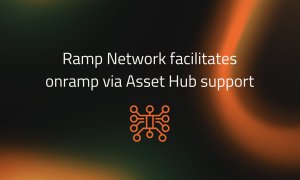BTC, ETH, ETH2, USDT, BNB, ADA, DOGE, DOT, UNI: Who’s next after the SEC is through with Ripple’s XRP?
Attorney Jeremy Hogan analyzed the top cryptocurrencies by market cap in terms of their “danger rating”.

While the SEC argues it has provided solid fair notice with prior guidance and 75 lawsuits against cryptocurrency firms, including Telegram (TON) and Block.one (EOS), it is safe to say that many within the space still don’t quite understand what makes a digital asset a security.
Attorney Jeremy Hogan took a shot at it and analyzed the top cryptos for their (de)centralized nature.
You might also want to read:
Will the Ripple lawsuit turn against Ethereum with the SEC revisiting its status?
SEC v. Ripple: Why is the lawsuit taking so long?
Can the Ripple lawsuit turn against Ethereum?
SEC finds Ripple’s argument “ironic” in bid to avoid controversial deposition
Bitcoin (BTC)
“Bitcoin is about as decentralized a ledger as it gets”…” so the SEC could never regulate it as a security, right? Well, that’s not how an SEC lawyer might see it. Under U.S. law something is a security when a person invests money in a common enterprise and led to expect profits from the efforts of a third party”, he explained.
There is no third party and Bitcoin is mined – so, no investment of money. However, 1,000 entities own 40% of all circulating bitcoin, and 2% of account holders now control 95% of bitcoin, which is not as decentralized as it is claimed to be.
“So, it could be argued, if the SEC had some inkling that the price of Bitcoin was being manipulated or pumped up by a large holder or group of holders, that it could argue that there was a common enterprise there and sales by the group were in effect an investment contract – a sale of a security. It’d be a stretch but that would be the argument”.
Ethereum (ETH)
The blockchain network is different from Bitcoin in that it is overseen by a centralized organization that has also raised money to fund the project.
Ethereum was funded through a pre-sale in 2014, where coins were sold before being in existence: “That tends to suggest that the common enterprise prong of the test is met because pre-sale purchasers were relying on the developers for the value of the coins they bought”.
The centralized management structure of Ethereum can affect price, Mr. Hogan continued, using the DAO hack as an example, which led to a hard fork of the ledger (which indicates lack of decentralization). Prices moved on both events.
“That is consistent with an investment contract – a common enterprise for profit. That’s problematic.”
While former SEC director Hinman – who is being summoned by Ripple Labs to testify in the lawsuit – said Ethereum is not a security, it might not be legally binding as the SEC argues in the SEC v. Ripple Labs.
“So, Ethereum has some serious problems with its initial fundraising which, although not called an Initial Coin Offering, sure does look like one”, Mr. Hogan said.
So, the price moves in correlation with the Ethereum Foundation’s actions and the centralized nature of the management group – although loosely formed – makes it easier for the SEC to sue, but being a non-profit organization could save Ethereum from the US financial watchdog.
Ethereum 2.0, however, changes the network’s model to a proof-of-stake system and this also changes the securities analysis.
Ethereum 2.0 (ETH2)
“The change to staking creates a problem first because the validators who stake their Ethereum do so with an expectation that their stake will earn them a return – that’s the whole point. So that goes to the “Expectation of profit” prong.”
The SEC’s 2019 guidance for digital assets said “An Active Participant” is responsible for the development, improvement (or enhancement), operation, or promotion of the network, particularly if purchasers of the digital asset expect an AP to be performing or overseeing tasks that are necessary for the network or digital asset to achieve or retain its intended purpose or functionality, Mr. Hogan explained.
“Well, isn’t the upgrade to Ethereum 2.0 exactly the type of thing that would raise the SEC’s alarm system – get the old death star fully functional and ready to destroy? Definitely seems like the SEC might see a “promotion” and “improvement” of the network by a semi-centralized entity with the rollout of 2.0. And now you have the profit to stakers added to the equation”.
Tether (USDT)
Bitfinex and Tether have already been sued by the New York Attorney General’s office for having misled the market. Each unit of the stablecoin is supposedly backed by one USD, but both firms have allegedly made false statements about it.
They have allegedly lied about the movement of hundreds of millions of dollars between the two companies to cover up the truth about massive losses by Bitfinex.
The companies will have to disburse $18.5 million in penalties, in addition to requiring a number of steps to increase transparency. In the meantime, they will cease any further trading activity with New Yorkers.
So, Tether could be an easy target for the SEC.
Binance Coin (BNB)
Binance Coin can be used to receive rebates on the cryptocurrency exchange. The operator launched Binance US and submitted itself to the country’s regulatory framework.
“First, is there an investment of money? Yes, you buy the coins. And where did the coins come from? Well, Binance had a genuine Initial Coin Offering – an ICO in 2017. This is the exact thing that Chairman Clayton and new SEC chairman Gensler have basically said is an investment contract”.
Binance founders received 40% of the tokens and are now Billionaires, 50% was sold to the public – including US residents – and 10% went to Angels.
On top of that, the Binance Coin is quite centralized: “In fact, in order to maintain the value of the coin, Binance buys back and burns the coins every quarter and even said in its White Paper that the purpose was to keep the coins scarce and valuable.”
“So, there was an investment of money, made to build and upgrade the platform and exchange, there is a common enterprise in which Binance is actively involved in promoting the coin and increasing its value.”
While being a utility token, Binance Coin is tied to the centralized Binance platform, which meets the necessary requirements to be a security, according to the Howey test.
Cardano (ADA)
Cardano is basically an alternative to Ethereum, initially released in an ICO, which automatically raises the “security alert” for the SEC.
“However, Cardano did something that was legally very smart. Its initial coin offering took place in my old stomping grounds of Japan which as you may have heard is very legally friendly to Crypto.
“About 95% of the ICO was to Japanese nationals and from there sales went into the exchanges for sales to Americans. Very smart Cardano. Because the SEC’s long arm does not stretch all the way across the Pacific”, Mr. Hogan continued, as he added that crypto platforms that facilitate the exchange of the ADA token – a potentially unregistered security – could be sued by the SEC.
“Far fetched? Perhaps – but also consistent with some statements from Chairman Gensler that the SEC would focus on exchanges and such”, he said, not expecting anything to happen, though.
Dogecoin (DOGE)
Within one week, 6.58 Billion Dogecoin had already been mined and 95% of all DOGE in existence was mined within the first year. No ICO, no sale. “A decentralized ledger and lose-knit community of funny strange people”, the attorney said as he sees no danger for a future legal fight with the SEC.
Polkadot (DOT)
Polkadot, which connects other blockchains together in a single network, was designed and set up by the Web3 Foundation. The organization had a number of ICOs starting in 2017 and has raised nearly $200 million to date.
The fundraisers took place before the Polkadot platform was fully functional, which is indicative of an investment contract where buyers are relying on the efforts of the developers to increase the value of the tokens, whose inherent value was zero at the time of the ICOs.
The initial tokens were distributed to investors (50%), to private sale investors (8.4%), kept by the Web3 Foundation (11.6%) as well as allocated to develop and build the infrastructure. “That’s all bad”.
In favor of Polkadot is that Web3 Foundation is a non-profit corporation headquartered in Switzerland, outside the jurisdiction of the SEC. The ICO sales were NOT made available to Chinese and Americans due to regulatory concerns. Smart moves, although the US regulator may still go after the exchanges.
Uniswap (UNI)
Uniswap Labs distributed tokens via an airdrop, but under current securities laws there is a relatively strong argument that the airdrop was the transfer of a security, Mr. Hogan explained, adding that fellow attorney Stephen Palley at Anderson Kill said that UNI is “almost certainly” a security.
Still, airdrops are free, there was no ICO, no profit made. The chances of an SEC lawsuit seem rather remote, according to Jeremy Hogan.
The attorney’s analysis can be found on his youtube channel, part 1 and part 2.









